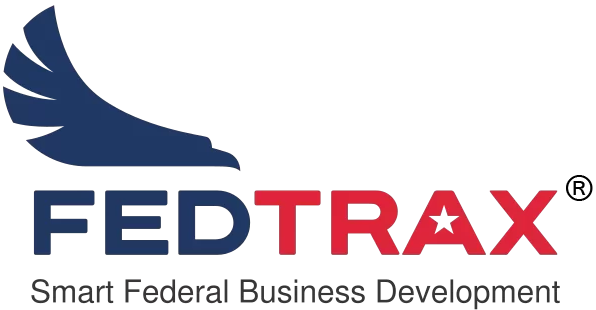
This is the first in a series of articles on how tech startups can pursue and win Federal Government business. You have the option to watch the video or read the post. I’m easy!
Barriers for Startup Companies
The Federal space is an uncomfortable environment for many technology firms, particularly startup companies, and with good reason. There are numerous barriers to success, both perceived and real, that these outfits face; namely…
- The Federal environment is overwhelming, overly complex and requires insider knowledge
- There is no good way for the Government to buy from us; we’re not set up
- We have no past performance in the Government space
- We have little or no socio-economic category advantages
- We lack sufficient Government relationships at key agencies
- Our technology is not certified for use in the Federal Government
tech startups, startup companies

With all those things working against tech startups, it’s no wonder that many avoid the Federal market all together. Yet not withstanding these obstacles, doing business with Washington can be quite rewarding long term. The US Government is the largest buyer of goods and services in the world. Former President Obama’s final budget proposal for 2017 requested $89.9 billion for IT, most of it appropriated by Congress. The Trump administration is expected to decrease this type spending very slightly, a fraction of a percent. This still represents a very large spend, and small business purchasing remains a Federal focus, using certain set-asides to try and even the playing field with the large Government contractors.
So how do tech startups take part in the frenzied spending and win contracts? Let’s start with determining your Federal fit.
Common Federal Government Ground for Tech Startups
Before startup companies jump headlong into the deep end of Federal business pursuits, it’s important to discover where they fit in, or at a minimum, can they fit in. The resources of time, capital, and talent to hunt long term Government opportunities are limited. These 4 steps will narrow your tech startup’s focus to maximize your efforts.
Brainstorm Technology Possibilities
This is with your technology startup company’s strategic marketing team or Board of Advisors, and involves two types of brainstorming.
First, think about all the potential uses of your core technology. It’s likely designed and developed for commercial use, but begin to think about other ways the platform or device can be used. For instance, if the key technology is an artificial intelligence (AI) driven marketing platform, think if that technology can be used for mining data used for other purposes, not necessarily ending in a transaction.
Second, start spitballing possible Federal Government uses of the same technology, based strictly upon what you now know. You’re developing a possibilities list here. In the example above, customer intimacy afforded by AI doesn’t have to mean paying customers. The Government has key stakeholders like the public, other agencies and universities that they consider customers too.
Assess Customization Tolerance
If your tech startup didn’t develop the technology stack with the Federal Government in mind, chances are that it might not fit like a glove for what they are looking for to satisfy a specific mission. The major Cloud providers like AWS and Azure had to modify their commercial environment offerings to meet FedRAMP security requirements and be granted Authority to Operate (ATO) in many Federal agencies. This is where you look in the mirror and determine, as a company, just how configurable your product is, and how willing are you to change it specifically to satisfy the dictates of the Federal space. If you’re viewing the US Government as just another customer for your tech startup suite of services and there is no desire or ability to customize without major pain and gnashing of teeth, there might be a mismatch
Identify Short List of Agency Targets
These next two steps work together. Identify all the Government agencies that your advisory team thinks may be able to use your technology. Most companies, even startup companies, have several technology capabilities, and different agencies may be able to use different services or parts of what you offer. Ultimately, tech startups want to come up with a cross-reference table like this one that tags capabilities with agency targets. This provides an idea of the size of the market and an early idea of the amount of energy and effort needed to attack the Federal space.
tech startups, startup companies

Tech Capabilities vs. Agency
Research Federal Agency Missions
Once you’ve got your short list, verify it by going to each agency website and researching its overall mission, vision, and sub-mission. All Federal agencies have this in some publicly available format on their sites. This is where tech startups learn things not previously known about their potential agency targets, including areas of focus that aren’t obvious or publicized. Go back and validate and adjust your match table.
Clearly Defining Federal Focus
These 4 steps are all a part of narrowing the field of view for tech startups and understanding how they might fit into the Federal landscape. It goes without saying that startup companies, particularly tech startups backed by venture capital, have something that is innovative and in some way cutting edge. Many agencies have specific funds set aside for exploring these technologies for use in the Federal Government (more on this in an upcoming article). By assessing Federal Fit, tech startups form the basis of a plan which I like to call the Federal Attack Strategy, a tactical approach to execution in the Government market.
For those in technology, early stage, looking to explore the Federal marketplace, check out the complimentary webinar “How IT Startups Can Win Federal Business”, put on by my friend Jennifer Schaus in her Government Contracting series. It airs next Monday 9/25 at noon EST. These events are short and to the point, lasting no longer than 20 min. Bring your popcorn!
View the Recording Here
